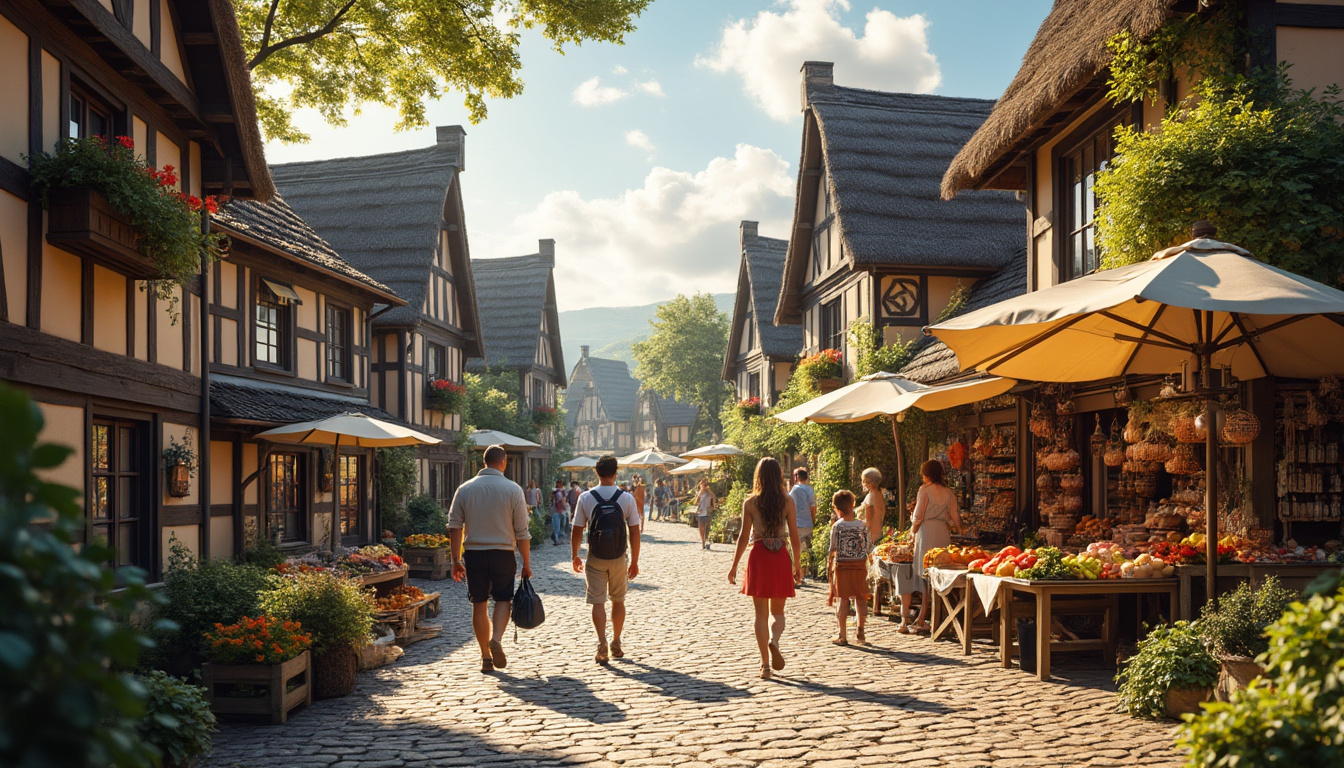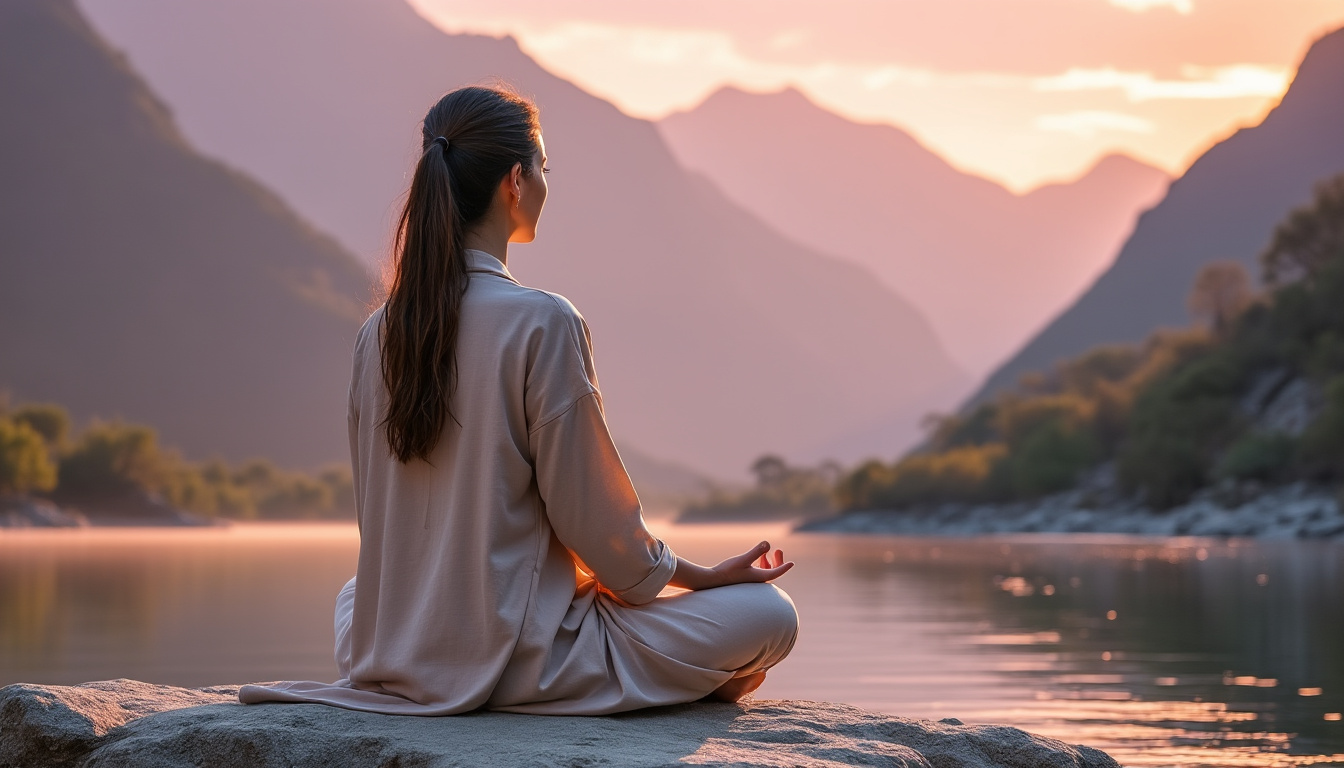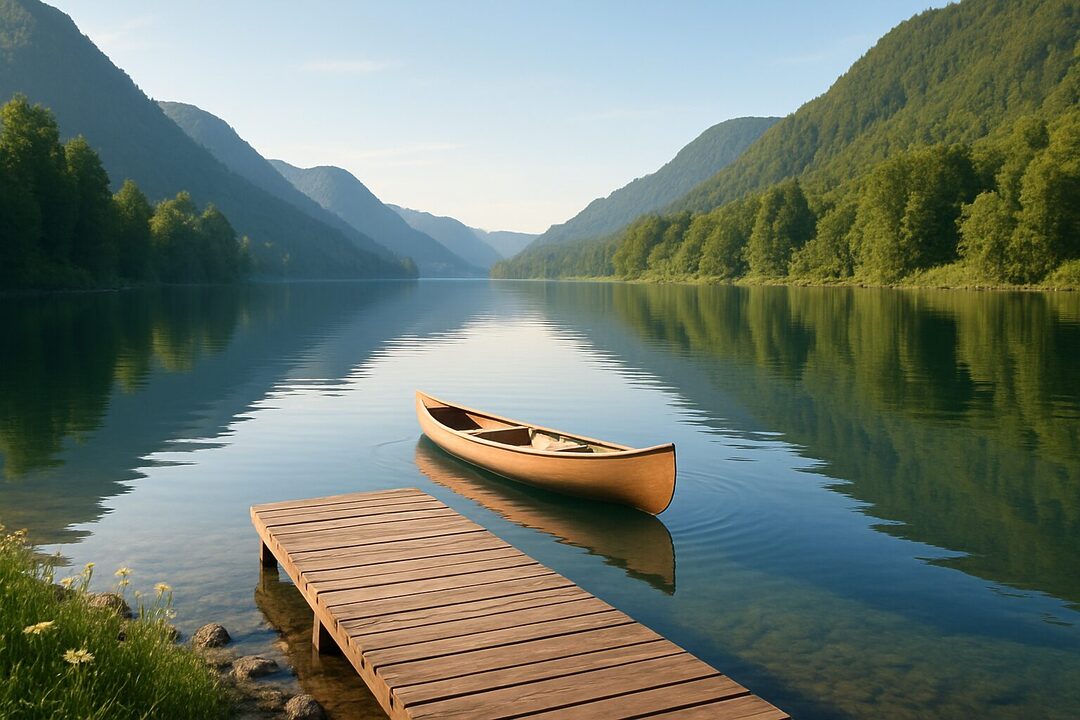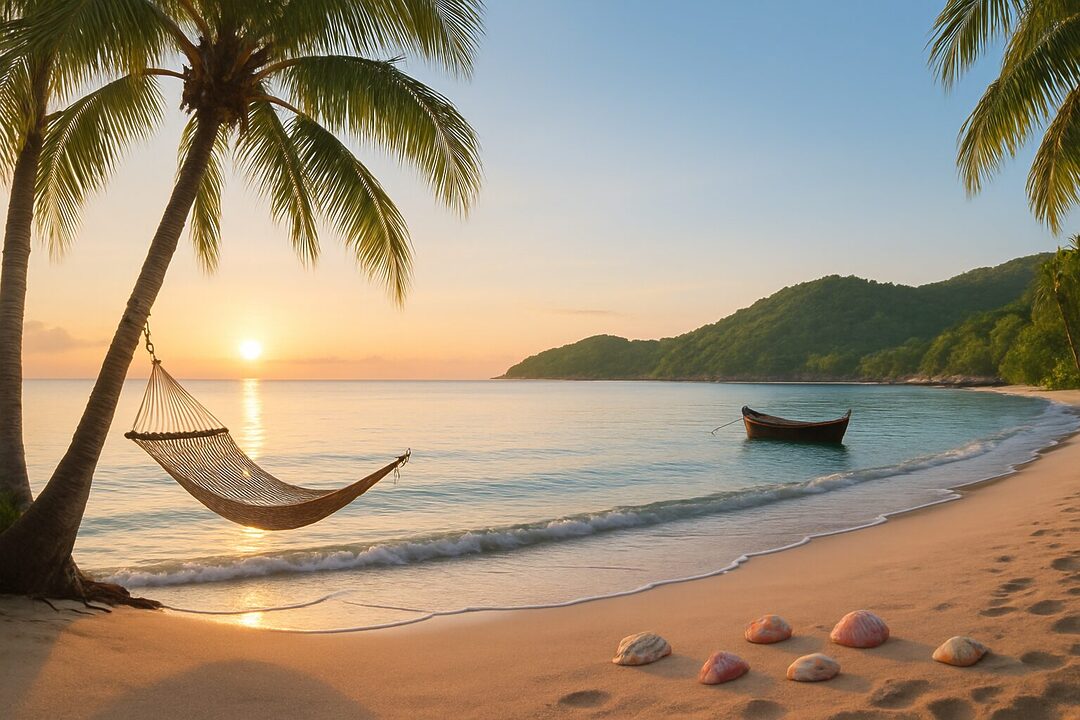In a fast-paced world driven by instant gratification and rapid transit, slow travel emerges as a profound antidote, inviting travelers to savor each moment and forge authentic connections. This transformative approach encourages lingering in places, embracing local rhythms, and appreciating cultural nuances that often escape hurried itineraries. Through personal stories and thoughtful insights, a deeper understanding of slow travel unfolds, revealing its power to enrich the soul and transform conventional perceptions of journeying. From the serene landscapes of hidden gems to intimate cultural immersions, slow travel offers a path toward mindful exploration that resonates in an era craving meaningful experiences beyond tourist clichés.
Embracing the Essence of Slow Travel: A Mindful Approach to Exploration
Slow travel, at its core, is a conscious choice to prioritize depth over breadth during trips. In contrast to conventional tourism which often focuses on checking off landmarks from a lengthy list, slow travel emphasizes immersion, intentional pauses, and deliberate engagement with destinations. This approach encourages travelers to move beyond surface-level encounters and partake in the authentic life and pulse of communities.
Key aspects defining the slow travel ethos include:
- Extended stays: Spending days or weeks in one place enables the traveler to witness the subtle changes in local life across seasons and celebrations.
- Meaningful connections: Engaging with locals through conversations, workshops, or shared meals fosters genuine cultural understanding.
- Sustainable practices: Prioritizing responsible travel providers such as Intrepid Travel or Responsible Travel nurtures the environment and economy of the destinations visited.
- Unhurried pace: Moving slowly, whether by foot, bicycle, or canoe, invites contemplation and awareness of surroundings.
Incorporating principles promoted by guides like The Slow Traveler and platforms such as National Geographic or Lonely Planet helps shape travel experiences that linger in memory. For example, choosing Backroads bicycle tours for regional exploration allows immersion in untouched landscapes at a tempo compatible with both the environment and the traveler’s well-being. Similarly, in 2025, many travelers seek routes inspired by Canoe & Kayak-led expeditions that mirror Indigenous pathways, blending adventure with cultural reverence.
Slow travel also fosters a deepened appreciation for “hidden gems” and serene landscapes often overshadowed by crowded destinations. This discovery process broadens horizons beyond mainstream travel magazines, encouraging exploration of Atlas Obscura’s curated curiosities that celebrate the unusual and overlooked. Consequently, the journey ceases to be a race and becomes a meditative act, aligning with emerging trends in wellness travel documented by blogs like Mindful Wellness Traveler.
| Slow Travel Component | Benefits | Examples |
|---|---|---|
| Extended Stays | Firsthand cultural immersion, local friendship development | Living in a Tuscan village for two weeks; homestays in Southeast Asia |
| Sustainable Travel | Environmental preservation, community support | Booking tours with Responsible Travel; eco-lodges in Costa Rica |
| Slow Pace | Mindfulness, connection to nature | Walking the Camino de Santiago; kayaking in the Canadian wilderness |
Adopting such practices doesn’t merely change how trips unfold; it cultivates a lifestyle mindset valuing simplicity and presence over accumulation and speed. Readers keen on enhancing their journeys with these dimensions may delve into resources like The Slow Travel Checklist, which presents layered guidance on how to weave mindfulness into travel plans.

Personal Stories Illuminating the Transformative Power of Slow Travel
Personal narratives play a crucial role in illustrating slow travel’s impact beyond theory. Stories of travelers who paused their routines to engage meaningfully with places offer intimate windows into transformative moments. Such accounts underscore how slow travel nurtures resilience, self-awareness, and empathy.
Consider Kira Salak’s daring solo expedition through Papua New Guinea’s dense jungles recounted in Four Corners: A Journey into the Heart of Papua New Guinea. Her experience battling challenging terrain and cultural boundaries typifies how slow travel’s immersive courage leads to profound personal discovery. Encounters with locals preserving ancient traditions embody the raw authenticity sought by slow travelers today, far removed from mass tourism circuits.
Similarly, Robyn Davidson’s epic trek across Australia’s outback, chronicled in Tracks, marries solitude with connection—to nature and self. Her journey highlights resilience through isolation and interdependence with animal companions, echoing themes central to slow travel: patience, respect, and being attuned to the environment.
Travel memoirs like Patrick Leigh Fermor’s A Time of Gifts offer reflections on journeys that embrace history and place with poetic sensibility. His youthful wanderings across interwar Europe convey a gradual unfolding of worldviews and emotional depth achievable only by engaging slowly with changing cultural landscapes.
These rich experiences contrast with rapid transit methods characterized by fleeting stops and checklist tourism. They demonstrate slow travel’s potential to cultivate stories that resonate deeply and inspire shifts in perspectives long after the journey’s end. Such stories, popularized through outlets like The Quiet Detour, also support greater understanding of cultures while fostering responsible travel ethics aligned with sustainability goals increasingly pursued in 2025.
| Traveler | Destination | Key Insight |
|---|---|---|
| Kira Salak | Papua New Guinea | Resilience and raw cultural connection through prolonged immersion |
| Robyn Davidson | Australian Outback | Solitude and harmony with nature foster self-discovery |
| Patrick Leigh Fermor | Interwar Europe | Slow movement bridges history and personal growth |
Planning and Practical Tips for Embracing Slow Travel in 2025
Designing a slow travel itinerary demands thoughtful preparation distinct from conventional fast-paced trips. The intent is to allow for flexibility, spontaneity, and meaningful engagement while honoring sustainable practices and mindful presence. Effective planning can make slow travel accessible and deeply rewarding.
Some essential strategies include:
- Choose fewer destinations: Prioritize quality over quantity to deepen experiences without exhausting time and resources.
- Opt for local accommodations: Homestays, guesthouses, and eco-lodges support community economies and foster authentic interactions.
- Engage with local experiences: Attend cooking classes, join craft workshops, or volunteer with cultural projects to connect beyond sightseeing.
- Utilize slow transport modes: Bicycles, walking tours, and even boats allow appreciation of surroundings at gentle speeds.
- Prepare for unpredictability: Embrace changes and delays as part of the journey’s richness rather than obstacles.
Resources like Serenity Trips’ planning guide offer practical frameworks for those seeking to embark on mindful travel adventures. They emphasize the importance of simplicity and sustaining local culture through intentional choices.
Slow travel also benefits from digital tools and platforms that align with its values. While avoiding overwhelming itinerary apps that incentivize speed, travelers can turn to niche providers such as Wild Junket, or curated guides by Rick Steves, who promote meaningful engagement rather than rapid sightseeing. These recommended sources balance inspiration with grounded practicality.
| Planning Element | Recommended Approach | Example Providers/Resources |
|---|---|---|
| Destination Choice | Select fewer, culturally rich locations | Atlas Obscura, Backroads, Lonely Planet |
| Accommodation | Local stays supporting communities | Serenity Trips, Responsible Travel, Intrepid Travel |
| Transport | Slow and environmentally friendly modes | Canoe & Kayak, bike tours, walking paths |
Integrating Wellness and Mindfulness into Slow Travel Journeys
Slow travel offers fertile ground for cultivating wellness and mindfulness, enhancing the holistic benefits of travel. Moving away from adrenaline-driven tourism toward quieter moments enables profound reconnection with oneself and nature.
Practices advocated by wellness-centric travel brands, such as Serenity Trips, foster experiences that blend physical health with mental clarity. Staying mindful through yoga sessions, meditation retreats, or simple nature walks deepens presence and joy in the present moment.
Elements to incorporate include:
- Mindful movement: Walking meditation or light hikes in serene environments stimulate sensory awareness and reduce stress.
- Local wellness traditions: Sampling herbal treatments, participating in traditional baths, or enjoying indigenous healing rituals fosters cultural bonding.
- Sustainable eating: Choosing farm-to-table meals made from local, organic produce nurtures well-being and supports regional agriculture.
- Digital detox: Limiting screen time during travel encourages authentic engagement and reduces mental clutter.
These integrative practices facilitate travel as a path of healing and transformation. They also align with national trends terming 2025 the “Year of Serene Travel,” catering to growing demands for restorative vacations documented extensively by platforms like Serenity Trips’ Wellness Travel section.

Slow Travel’s Growing Influence on Sustainable Tourism and Future Trends
By 2025, slow travel is no longer a niche movement but a crucial component of sustainable tourism addressing ecological, cultural, and economic challenges globally. It mitigates overtourism’s detrimental effects while empowering marginalized communities to share their narratives and livelihoods responsibly.
Several indicators underscore this shift:
- Destination policy evolution: Many cities and regions, inspired by success stories from Lonely Planet and National Geographic features, invest in infrastructures supporting longer stays and responsible visitor behavior.
- Community-led tourism: Indigenous and rural communities gain prominence through partnerships with platforms like Intrepid Travel and Responsible Travel, emphasizing empowerment and cultural preservation.
- Education and awareness: Research studies, such as those compiled in Slow Tourism: Case Studies and Personal Stories, highlight successful models and inspire replication globally.
- Tourism industry adaptations: Businesses increasingly incorporate sustainability pledges featuring slow travel principles, influencing marketing, product design, and customer education.
Looking ahead, technological advancements will enhance slow travel through personalized experiences without succumbing to rapid consumption cues. Artificial intelligence-driven itinerary suggestions could prioritize “slowness” and local impact over mere efficiency, a trend explored in depth by travel analysts at Wild Junket and Rick Steves’ latest advisories.
Traveler communities are also evolving, with forums and social networks like The Quiet Detour offering spaces where slow travel enthusiasts exchange insights and co-create authentic journey approaches. This human-centric model contrasts sharply with impersonal mass tourism and heralds a more conscientious future for global travel culture.
| Sustainable Tourism Aspect | Slow Travel Impact | Future Trend |
|---|---|---|
| Environmental Preservation | Reduced carbon footprint through slow transport and longer stays | Green tech integration supporting eco-friendly travel |
| Cultural Integrity | Authentic cultural exchange preserving traditions | Increased community control over tourism |
| Economic Empowerment | Support to local businesses and craftspeople | Growth of community-based tourism enterprises |

As a 34-year-old Yoga Teacher, I am passionate about guiding others on their journey to mindfulness and well-being. With years of experience in various yoga styles, I create a welcoming environment that encourages personal growth and self-discovery. Join me in exploring the transformative power of yoga.


